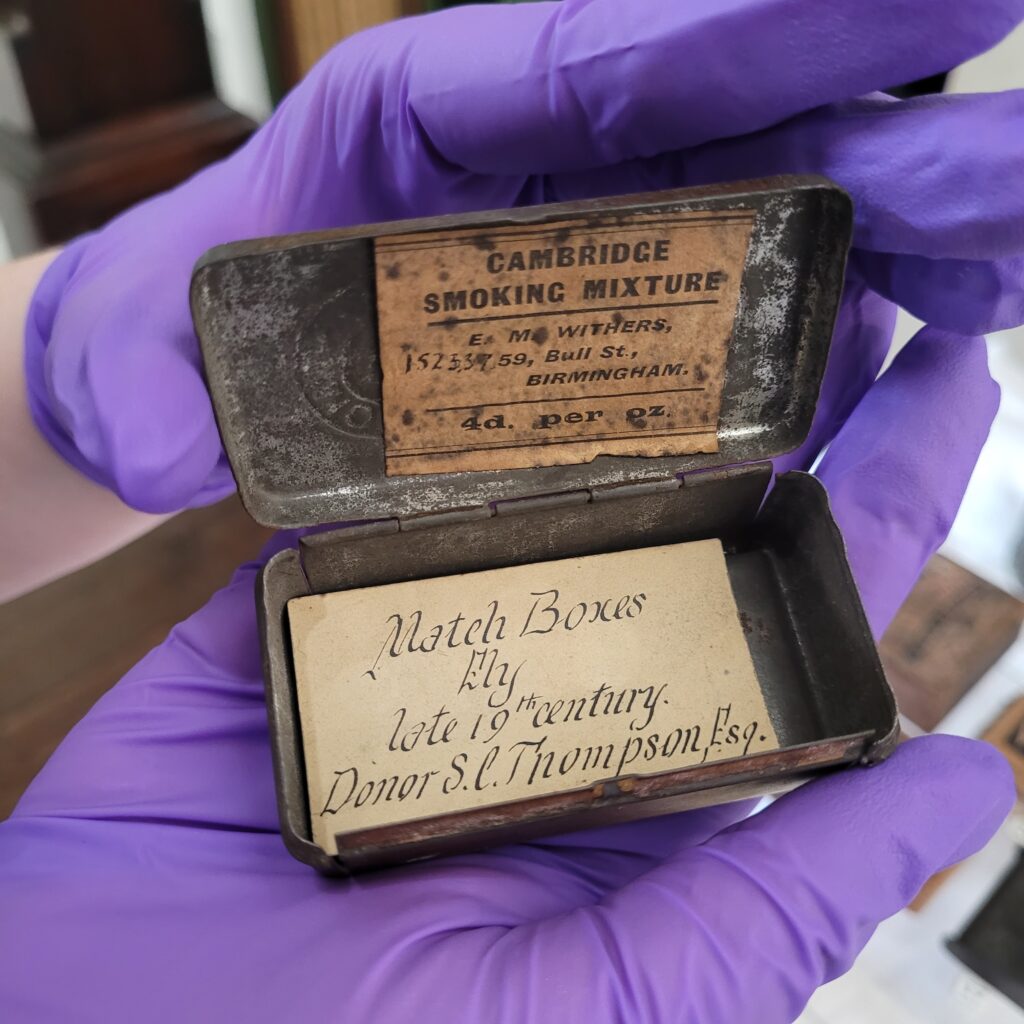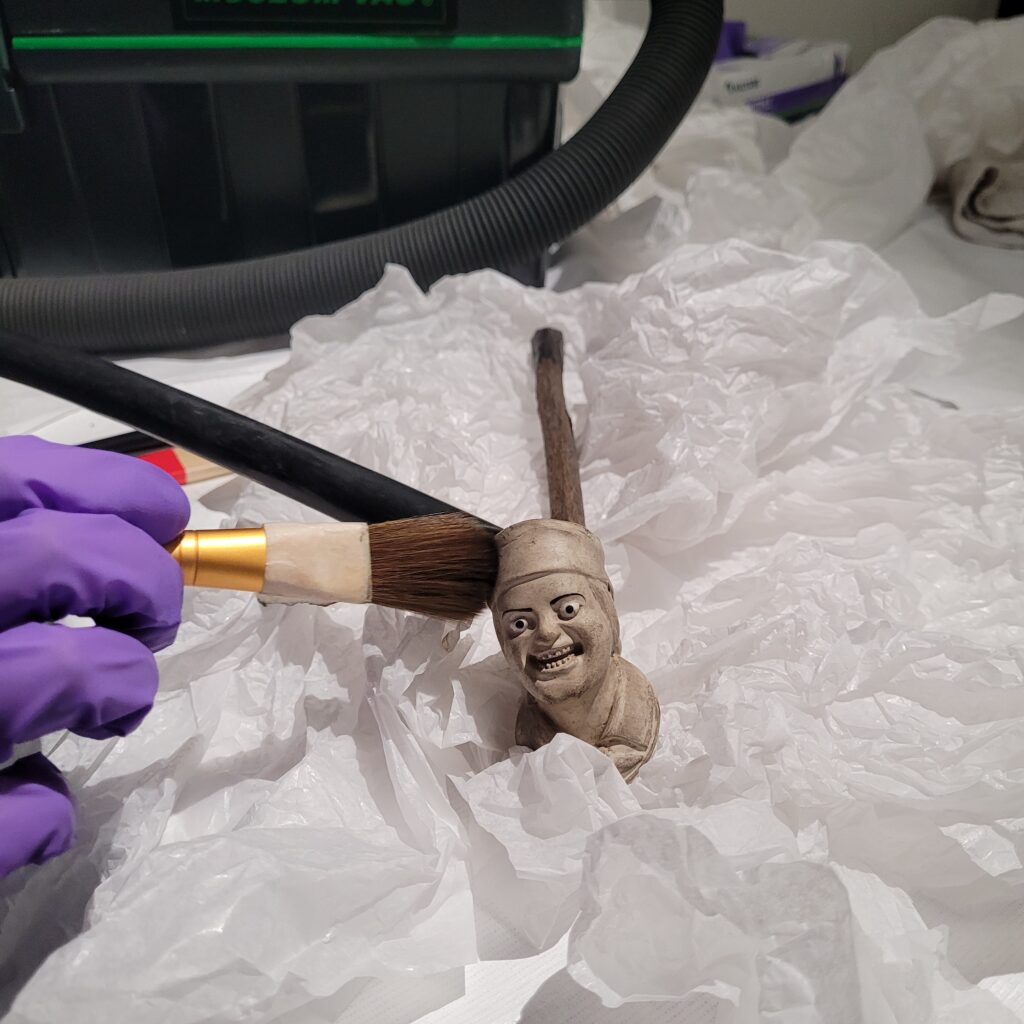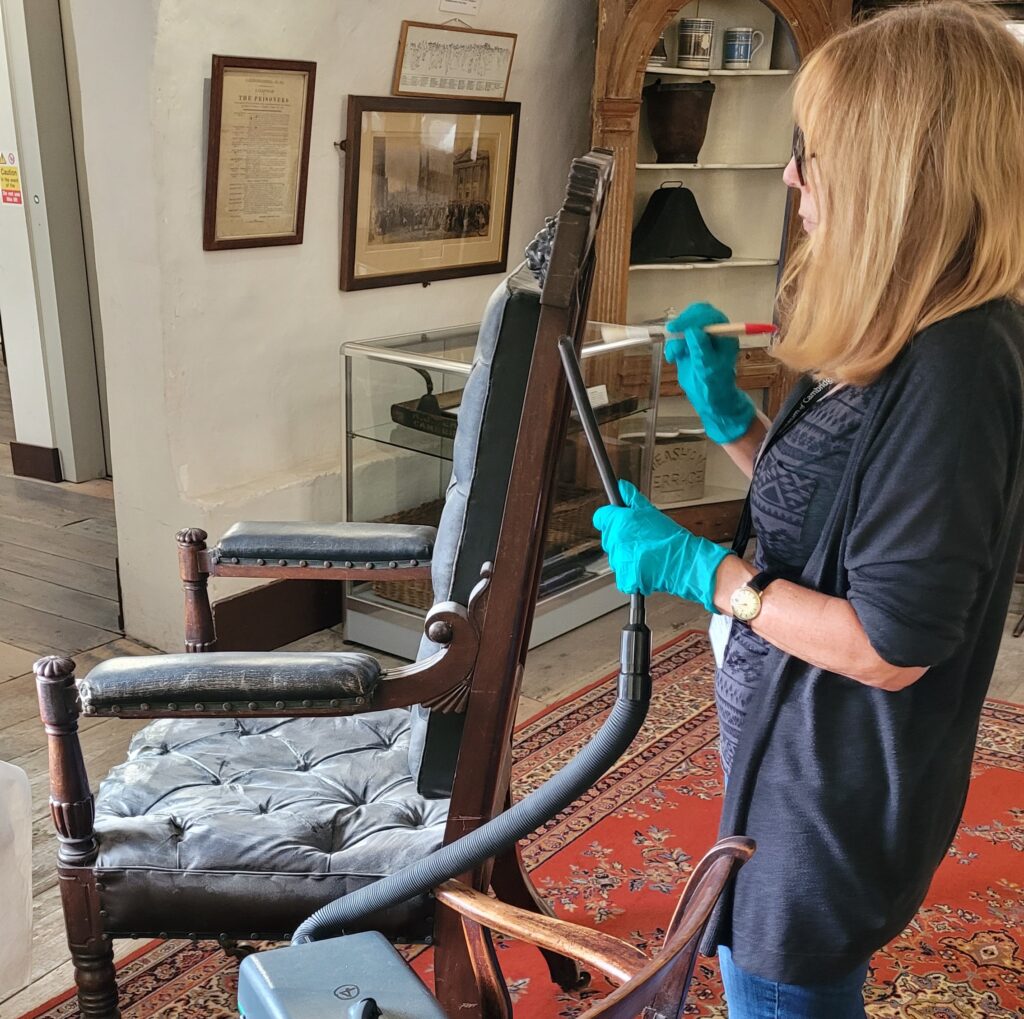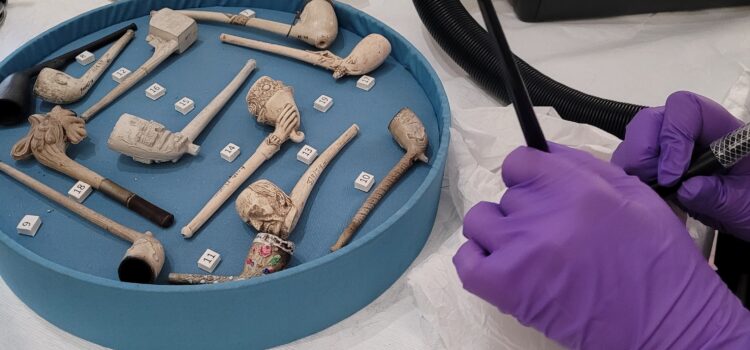In September, the Museum’s Collections Officer Beau Brannick and a team of dedicated collections volunteers began an ambitious project to catalogue, clean, and audit every object on display in the Museum of Cambridge. Thanks to the generous support of the Foyle Foundation, the project resulted in over 1,300 objects being cared for and gaining an overall increased access to our collections.



The Museum of Cambridge comprises 9 rooms, each filled with a variety of social history which tells the story of Cambridge and Cambridgeshire. To complete the on-display audit, the collections team had to work methodically, setting up in each room and focusing on every case, shelf, and nook and cranny to ensure every object was cared for.
In total, the collections volunteers dedicated an astounding 407.5 hours to help care for the on-display collection at the Museum. The audit allowed the team to discover over 1,300 objects were on display in the Museum, and clean over 1,100 of them. To clean, volunteers were trained by the Collections Officer to safely handle objects and use a museum vacuum and appropriate brushes to remove any dust and grime gently.

The museum vacuum differs from your everyday vacuum cleaner, as it has dials which allow us to turn the suction all the way down so we can carefully work on more fragile objects. It also allows us to attach different extensions onto the end, such as very tiny nozzles for very tiny objects. The vacuum contains a HEPA filter system that keeps mildew spores locked in the disposable paper bag, keeping us safe from breathing them in, and also other objects safe as spores won’t be released into the air.
Alongside cleaning objects, the team checked each object for their object number. This number is normally marked on the object in some way and allows us to match it with an object number on our collections management system. Once it is found in the system, the team can learn more about the object, such as when it came into the collection, what it is, and its story. By matching objects to their records, the team managed to ensure the correct location for over 1,000 objects was changed. When changing these locations, 193 objects were shown on the collections management system to be in the wrong location. This can be a nightmare for Museum staff when they are trying to locate an object, and the system is telling them the wrong place, meaning they cannot locate it. These were all rectified, as well as the team discovered 15 objects whose object location was shown as ‘not located’, when in fact they were holding the object in their hands!
“The Museum just feels better, it’s hard to put your finger on it, but it smells and looks cleaner.”
Matt Lowe, Museum Trustee.
Completing the on-display audit has allowed the Museum to better understand its collection which in turn, has allowed avenues of research, curation and engagement to grow. Alongside the benefits to the objects, we have had the opportunity to work with a fantastic team of collections volunteers who dedicated their time. The Museum of Cambridge is excited to move onto the next collections-based project to help continuing telling the extraordinary stories of ordinary people and caring for our collections of over 40,000 objects.


With thanks to the Foyle Foundation for providing this opportunity to the Museum of Cambridge.
